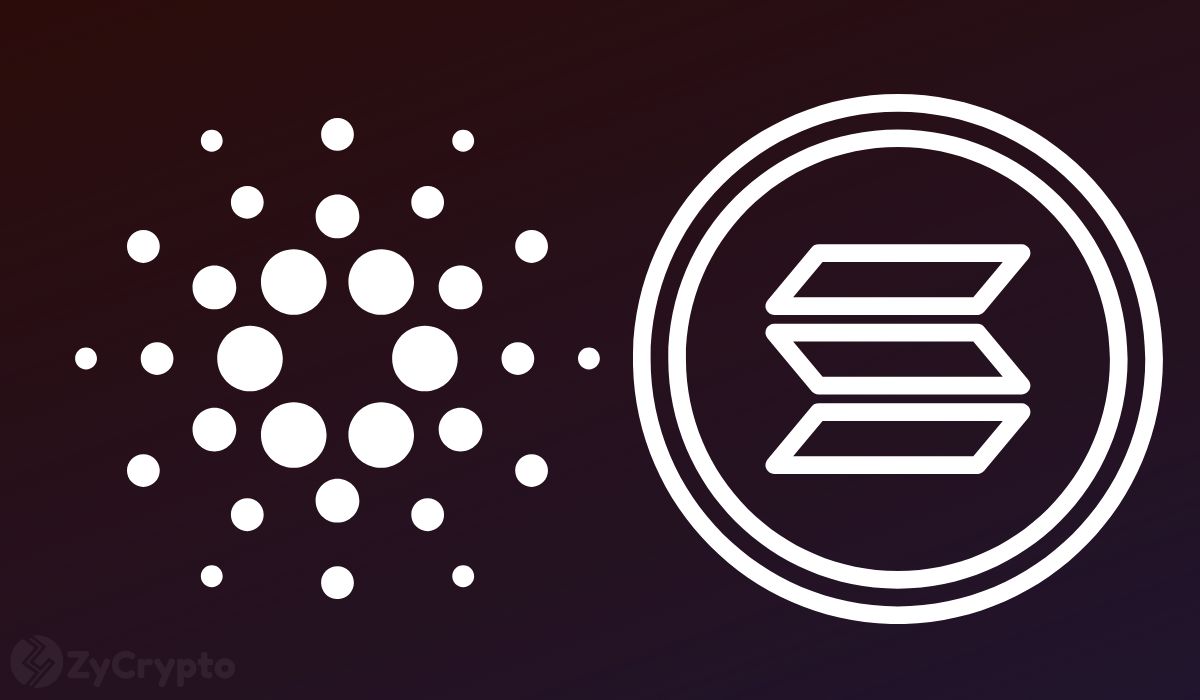Genius DEX: How Liquidity Providers can boost returns through Concentrated Liquidity
In 2Q2022, Genius Yield plans to release its Genius DEX, which will be the first concentrated liquidity order-book DEX offered with an AI-powered yield optimizer.
.png)
PART 1: BACKGROUND
In 2Q2022, Genius Yield plans to release its Genius DEX, which will be the first concentrated liquidity order-book DEX offered with an AI-powered yield optimizer. For passive or active traders, the order-book DEX will offer programmable Smart Swaps, which will allow users to do similar trades available in the stock market. Orders that will be possible include simple orders such as limit or trailing stop orders to complex trading strategies that rely on technical analysis and algorithms such as momentum, relative strength, or volatility.
Through concentrated liquidity, the Genius DEX will offer Liquidity Providers (LPs) capital efficiency, higher returns, and no impermanent loss. Later in 2022, the release of Smart Liquidity Vaults will allow LPs to passively maximize their yield by using AI-powered strategies to manage their funds. We’ll review the benefits of concentrated liquidity for LPs and then cover the unique opportunities with the Genius DEX.
PART 2: CONCENTRATED LIQUIDITY
Concentrated Liquidity is the ability for LPs to allocate their liquidity to a DEX within desired price ranges.
A. Range Orders
Many AMM DEXs don’t allow LPs to concentrate their liquidity. In these AMM DEXs, the LP’s funds are used to provide liquidity from price $0 to infinity (∞), where the LP receives trade fees proportional to the weight of their liquidity in the aggregated liquidity pool. In contrast, concentrated liquidity is achieved by range orders, where a LP can pick the price range they want their liquidity to be available in a DEX. For example, let’s say Cardano token XYZ currently trades at $3.00 ADA/XYZ on the Genius DEX. You decide to provide $1,000 in liquidity, which brings the total liquidity provided by LPs to $100,000 for this asset pair. You also create a range order with bounds of $2.90 to $3.10. This means your liquidity can only be used for trades within this price range. Outside of this price range for the asset pair, your liquidity won’t be used for trades.
Note: In liquidity pools that aggregate LPs’ funds, the LPs have a claim on the transaction fees generated proportionate to each LP fund’s weight in the pool. If the previous example was an AMM DEX that did not offer concentrated liquidity, you would have a 1% weight in the total liquidity pool, meaning that you would receive 1% of the total transaction fees generated. For the Genius DEX, your funds won’t be pooled, as each LP’s deposit will represent its own fragmented liquidity pool.
B. Using Range Orders to maximize yield through Capital Efficiency
Capital Efficiency means using your capital in the most optimal way to maximize returns. The Genius DEX will allow you to achieve capital efficiency by using range orders to place your liquidity only at price ranges the LP thinks the asset pair will most likely trade. The LP can split up, or fragment, his liquidity across multiple price ranges and across multiple trading pairs. Let’s look at two examples to see how capital efficiency boosts returns.
1. Trader A LP’s return when spreading out liquidity — Trader A reviews the ADA/XYZ pair’s current fragmented liquidity pools across various price ranges, which is seen in the chart below. The LP decides to do range orders to equally distribute their $1,000 of liquidity proportionately to the total liquidity already provided. Including the LP’s funds, $555,000 is available to trade from prices $2.26 to $4.06 for the ADA/XYZ pair. For example, $258,000 represents around 46% of the total $555,000 liquidity and is allocated to the $2.86 to $3.16 price range. Similarly, the LP has allocated 46% of his capital, or $465, in liquidity for the $2.86 to $3.16 price range.
Trader A has likely inefficiently utilized their capital. Over the next week, if no trades happen at the $2.26 to $2.56 range and the $3.46 to $4.06 range, Trader A has lost potential returns on $56 of capital, which would not have generated any trade fees. For the total liquidity pool, $31,000 of capital would not have generated any trade fees.
While the Genius DEX offers LPs the ability to fragment their liquidity at desired prices and to rebalance them when needed, many AMM DEXs on Cardano and Ethereum only allow LPs to contribute liquidity from $0 to ∞. These types of DEXs limit LPs’ returns because LPs are forced to allocate capital at prices where trades are very unlikely to happen. Next, we’ll see how another LP takes advantage of concentrated liquidity to efficiently use their capital to maximize returns.
2. Trader B LP’s return with concentrated liquidity — Now’s let’s look at your potential return if the LP utilized range orders to concentrate their liquidity only within a certain price range.
In this example, you see that around 46% of the total liquidity depth is between $2.86 to $3.16. Trader B believes the price will be more stable over the next month and will only trade between $2.86 to $3.16. Consequently, Trader B decides to concentrate liquidity of $465 on the Genius DEX using a range order with bounds from $2.86 to $3.16. Since the LP did not allocate the full $1,000, they can use the remaining $535 to invest elsewhere for additional returns.
Over the next month, the price only trades between $2.86 and $3.16. Both Trader A and Trader B make the same yield. How? Trader A had multiple range orders, which included $465 in liquidity at the $2.86 to $3.16 price range. The other $535 of Trader A’s capital was allocated to prices that did not trade and consequently did not generate yield. If $1,000 in fees are generated for trades in this price range, both Trader A and Trader B would theoretically get the same yield from those trade fees, although Trader B only allocated $465 of his total $1,000.
When LPs don’t have the ability to allocate their liquidity through range orders, the outcome is capital inefficiency and potential lower returns. While Trader A inefficiently used $535 in capital by allocating liquidity to prices where no trades fees were generated, Trader B used less capital to generate the same return of Trader A. In addition, Trader B can use the remaining $535 to provide more liquidity or invest in other opportunities.
On the other hand, if most of the trades happen outside of the $2.86 to $3.16 price range, Trader A would still collect more trade fees in absolute terms while Trader B would collect less trade fees. A principal risk of concentrated liquidity is that a LP can make their range order too small and miss out on trade fees if trades happen outside of their range order. Concentrating liquidity comes with this tradeoff, which some LPs may accept if the potential returns and capital efficiency are worthwhile. Each LP will have to decide how to manage their liquidity allocation.
3. Concentrated Liquidity Multiplier — In addition to capital efficiency, Trader B can also increase returns substantially by putting all of their capital in a price range. The tighter the price range, the higher the potential return because more capital is concentrated. Below is an illustration of how concentrated liquidity can increase returns. In addition to capital efficiency, the concentrated liquidity Genius DEX gives you the option to concentrate your liquidity and potentially earn more fees with less capital.
PART 3. WHAT ABOUT IMPERMANENT LOSS?
A. Impermanent Loss — An issue for the AMM DEX
Impermanent Loss — Happens when the total value of deposited assets you provided as liquidity changes compared to the value you would have had from holding the assets. Impermanent loss is due the structure of the AMM DEX called the constant product formula, which is (x*y = k). The formula controls the changing ratio of liquidity provided between two assets.
For example, let’s say ADA and XYZ both trade at $1 per unit. A LP deposits liquidity of 10 ADA and 10 XYZ to create their own liquidity pool on an AMM DEX. If x = ADA and y = XYZ in the constant product formula, we can solve for k, which equals 100. The market becomes bullish on ADA and traders subsequently buy ADA with XYZ from the LP’s liquidity pool. In an AMM DEX, the constant product formula would require that if there were 5 ADA left in the pool after all the trades, there would be 20 XYZ in the pool so that the value of k, which is 100, does not change. The new ratio for trading the ADA/XYZ pair would change from a 1:1 ratio to a 1:4 ratio, which means that 1 ADA equals 4 XYZ for trades in the liquidity pool. If the LP withdraws all their liquidity, they’ll receive 5 ADA and 20 XYZ. In addition, let’s also assume the LP receives 1 ADA in trading fees after costs.
At the time of the LP’s withdrawal, ADA’s price has gone up 100% from $1 to $2 and XYZ’s price has gone down 50% from $1 to $0.50. With 5 ADA, 20 XYZ, and 1 ADA in trading fees, the market value of the LP’s holding at withdrawal is $22. However, if the LP had decided to just hold the 10 ADA and 10 XYZ and not create a liquidity pool, the market value of his holdings would be $25, which is $3 higher than the previous $22. This $3 difference is an impermanent loss, as the LP would have gotten a higher return on investment by just holding the assets and never creating a liquidity pool. Impermanent loss is the difference in the total return the LP would have had from just holding the 10 ADA and 10 XYZ versus the LP’s total return of creating the liquidity pool.
Note: The impermanent loss isn’t “permanent” until the LP withdraws their liquidity from the pool. The ratio of ADA to XYZ in the liquidity pool can change depending on future trade activity.
B. Genius DEX — No Impermanent Loss
- How does the Genius DEX eliminate impermanent loss? A weakness of the AMM DEX is that the price of the assets for all LPs in a liquidity pool is on a fixed liquidity curve determined by the constant product formula. This constant product formula is the source of impermanent loss for LPs. In contrast, the Genius DEX eliminates impermanent loss because it does not utilize the constant product formula. Instead of a single liquidity curve, each LP creates their own fragmented liquidity pool with price ranges determined by their range orders. The Genius DEX uses an order book matching algorithm, or Smart Order Routers, to match open orders with the fragmented liquidity pool positions at fixed price points.
- If there is no impermanent loss in the Genius DEX, does that mean there are no risks? No risk of impermanent loss does not mean there are no risk-free activities on any DEX, including the Genius DEX. One risk is capital inefficiency if the price of the asset pair moves outside of the LP’s range order bounds. In this situation, the LP’s liquidity cannot be used to make any trades. Therefore, the LP’s liquidity becomes inactive and will not accumulate any trade fees. To continue to collect trade fees in this situation, each LP would have to manually rebalance their position to adjust the range order to an optimal price level. For more volatile assets, the LP would have to devote significant time to actively monitoring and adjusting their positions, as well as comparing potential yields of other yield farming opportunities. As many LPs don’t have the time or skill to actively manage their liquidity, LPs will have the option to use Smart Liquidity Vaults powered by the Genius Yield Optimizer to automatically rebalance their range orders, auto-compound returns, and deposit their liquidity to the best yield farming opportunities.
PART 4: CONCLUSION
- Concentrated Liquidity allows the efficient use of capital, eliminates impermanent loss, and helps LPs optimize returns.
- Instead of spreading liquidity from $0 to ∞, LPs can use range orders to concentrate their capital at desired price ranges. Range orders allow LPs to choose the prices or ratio for asset pairs that their liquidity will be traded, potentially maximizing the return on their capital.
- By concentrating liquidity, LPs can increase returns substantially. The smaller the range order bounds, the higher the potential returns.
- Impermanent loss is eliminated. The Genius DEX eliminates the impermanent loss risk inherent in AMM DEXs that use the constant product formula by using an order-book model, where price is dynamically determined by the order book. Instead of a fixed liquidity curve applicable to all LPs via a global state, the Genius DEX allows each LP to have custom fragmented liquidity pools.
- Smart Liquidity Vaults powered by the Genius Yield Optimizer will allow users to passively optimize yield by rebalancing their capital and reallocating their liquidity to the best yield farming opportunities.
Follow me on Medium and Twitter for future updates
Additional Sources:
Links:
Delegate Your Voting Power to FEED DRep in Cardano Governance.
DRep ID: drep12ukt4ctzmtf6l5rj76cddgf3dvuy0lfz7uky08jfvgr9ugaapz4 | We are driven to register as a DRep by our deep dedication to the Cardano ecosystem and our aspiration to take an active role in its development, ensuring that its progress stays true to the principles of decentralization, security, and community empowerment.DELEGATE VOTING POWER!

.png)






